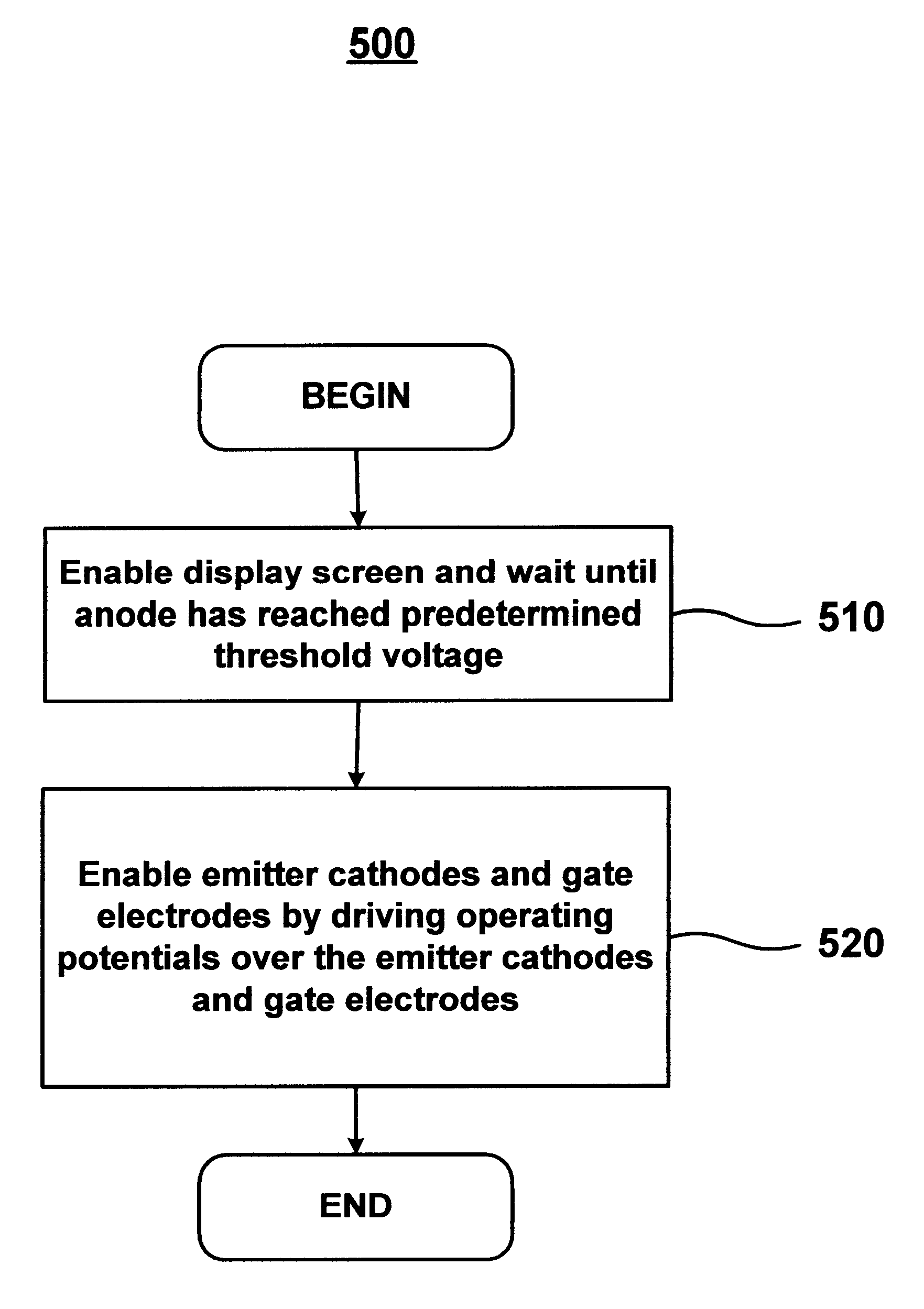Procedures and apparatus for turning-on and turning-off elements within a field emission display device
a technology of field emission display device and process, which is applied in the direction of tubes with screens, tubes/lamp factory adjustment, instruments, etc., can solve the problems of high probability of small ionic pressure zone, small amount of contaminants in fed vacuum tubes, and high probability of contamination forming small ionic pressure zones, etc., to achieve the effect of slowing down the emission curren
- Summary
- Abstract
- Description
- Claims
- Application Information
AI Technical Summary
Benefits of technology
Problems solved by technology
Method used
Image
Examples
Embodiment Construction
The present invention provides for a process of conditioning newly fabricated FEDs to remove contaminant particles contained therein. The conditioning process is performed before the FED device is used in normal operations, and is typically performed during manufacturing. During the conditioning process of the present invention, contaminants contained in the vacuum tube of an FED are bombarded by a large amount of electrons. As a result of the bombardment, the contaminants will be knocked off and collected by a gas-trapping device (e.g., a getter). Because newly fabricated FEDs contain a large amount of contaminants, precautious steps must be taken to ensure that arcing does not occur during the conditioning process in accordance with the present invention. To this end, according to the present invention, the conditioning process includes the step of driving the anode to a predetermined high voltage and the step of enabling the emission cathode thereafter to ensure that the electron...
PUM
 Login to View More
Login to View More Abstract
Description
Claims
Application Information
 Login to View More
Login to View More - R&D
- Intellectual Property
- Life Sciences
- Materials
- Tech Scout
- Unparalleled Data Quality
- Higher Quality Content
- 60% Fewer Hallucinations
Browse by: Latest US Patents, China's latest patents, Technical Efficacy Thesaurus, Application Domain, Technology Topic, Popular Technical Reports.
© 2025 PatSnap. All rights reserved.Legal|Privacy policy|Modern Slavery Act Transparency Statement|Sitemap|About US| Contact US: help@patsnap.com



